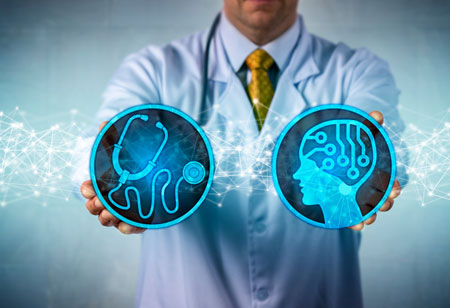Thank you for Subscribing to Healthcare Business Review Weekly Brief
How AI Turns a Boon to the Healthcare Industry

Be first to read the latest tech news, Industry Leader's Insights, and CIO interviews of medium and large enterprises exclusively from Healthcare Business Review
Thank you for Subscribing to Healthcare Business Review Weekly Brief

By
Healthcare Business Review | Friday, February 19, 2021
Stay ahead of the industry with exclusive feature stories on the top companies, expert insights and the latest news delivered straight to your inbox. Subscribe today.
The healthcare sector has used AI to advance many areas of patient care, such as improving diagnosis, prescribing therapies and educating patients through digital health programs. It has also been used to reduce risk while expanding the various capabilities and enabling organizations to do more with less, particularly during a global pandemic.
Fremont, CA: Artificial intelligence is frequently represented in popular movies and TV dramas as a technology that is determined to take over the planet. Only a few weeks ago, a new series on Fox premiered, underlining "a crooked AI with the ability to constantly improve itself that could spell harm to humankind."
Luckily for us, these ominous pictures are not what's really going on, where AI can actually save lives and improve work-life balance. AI's basic task is to combine massive data sets, quicker and more effectively than any human being could, and to analyze patterns that could prove useful. This helps people working with AI to concentrate on more critical things, while the AI sifts only the information that requires attention through the context data and surfaces.
The healthcare sector has used AI to advance many areas of patient care, such as improving diagnosis, prescribing therapies and educating patients through digital health programs. It has also been used to reduce risk while expanding the various capabilities and enabling organizations to do more with less, particularly during a global pandemic. Perhaps the greatest benefit of AI is yet to be realized: to relieve workers of time-intensive, manual tasks; to minimize burnout; and to help concentrate precious human time on those tasks of the highest value.



